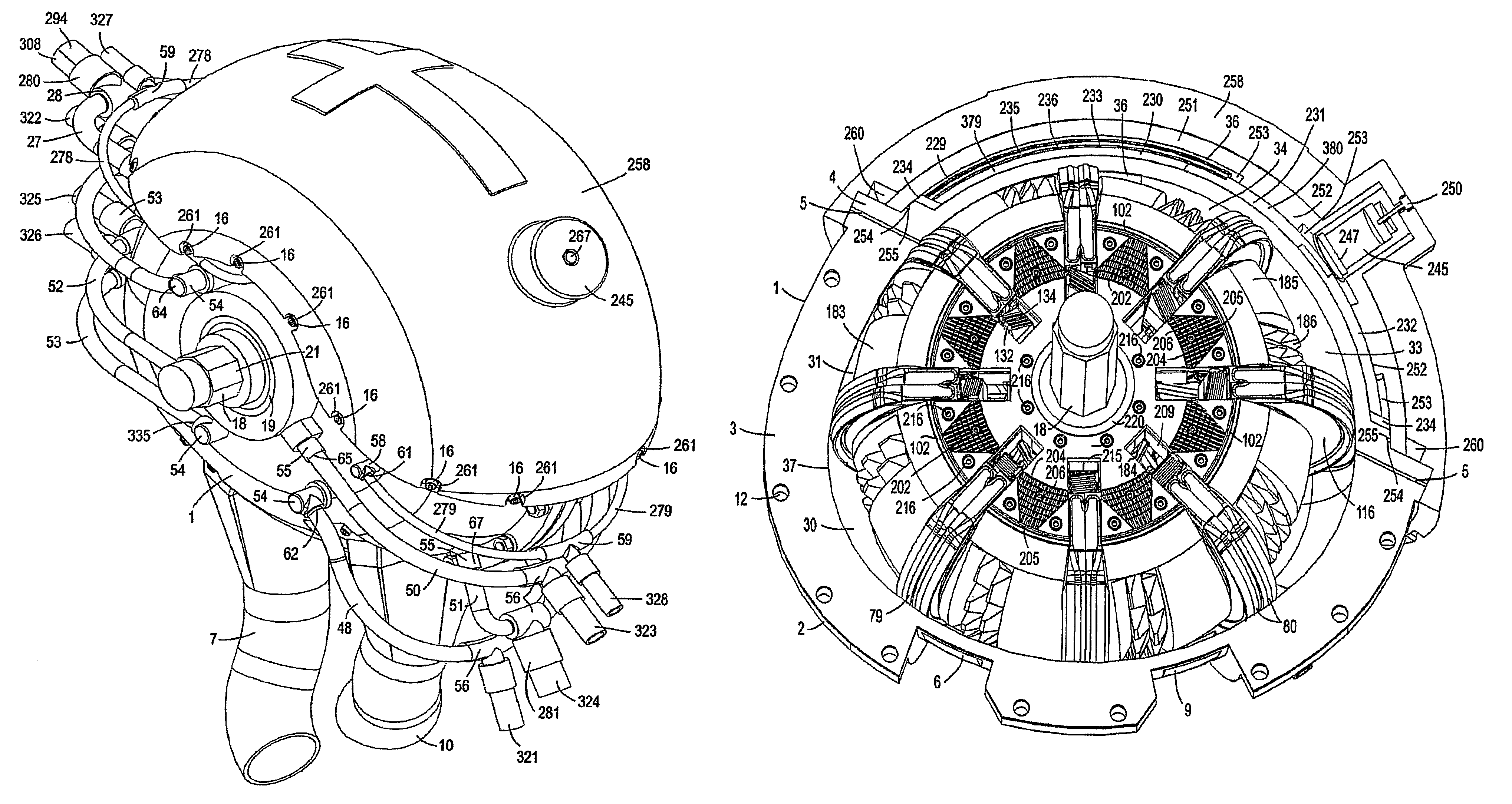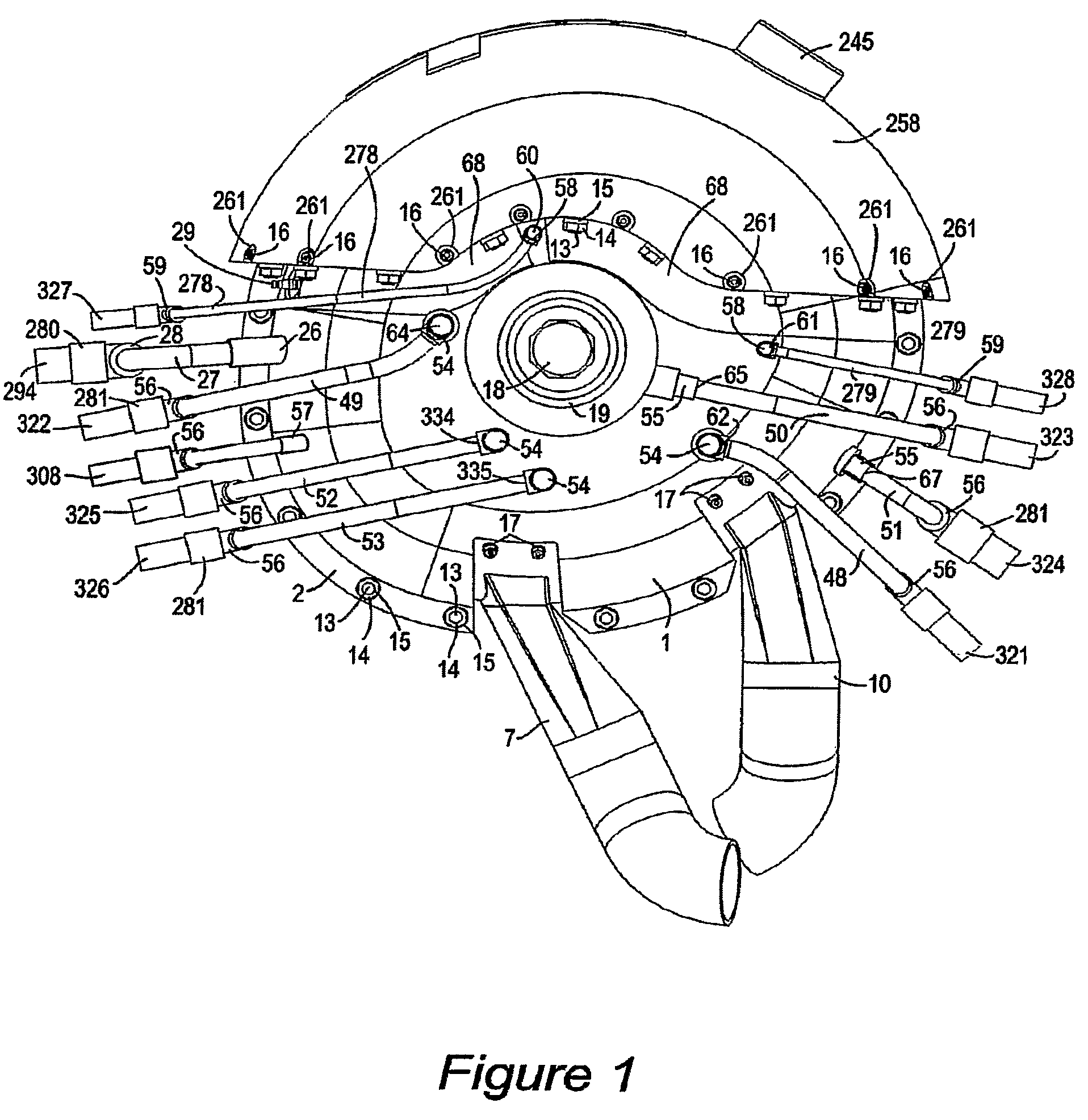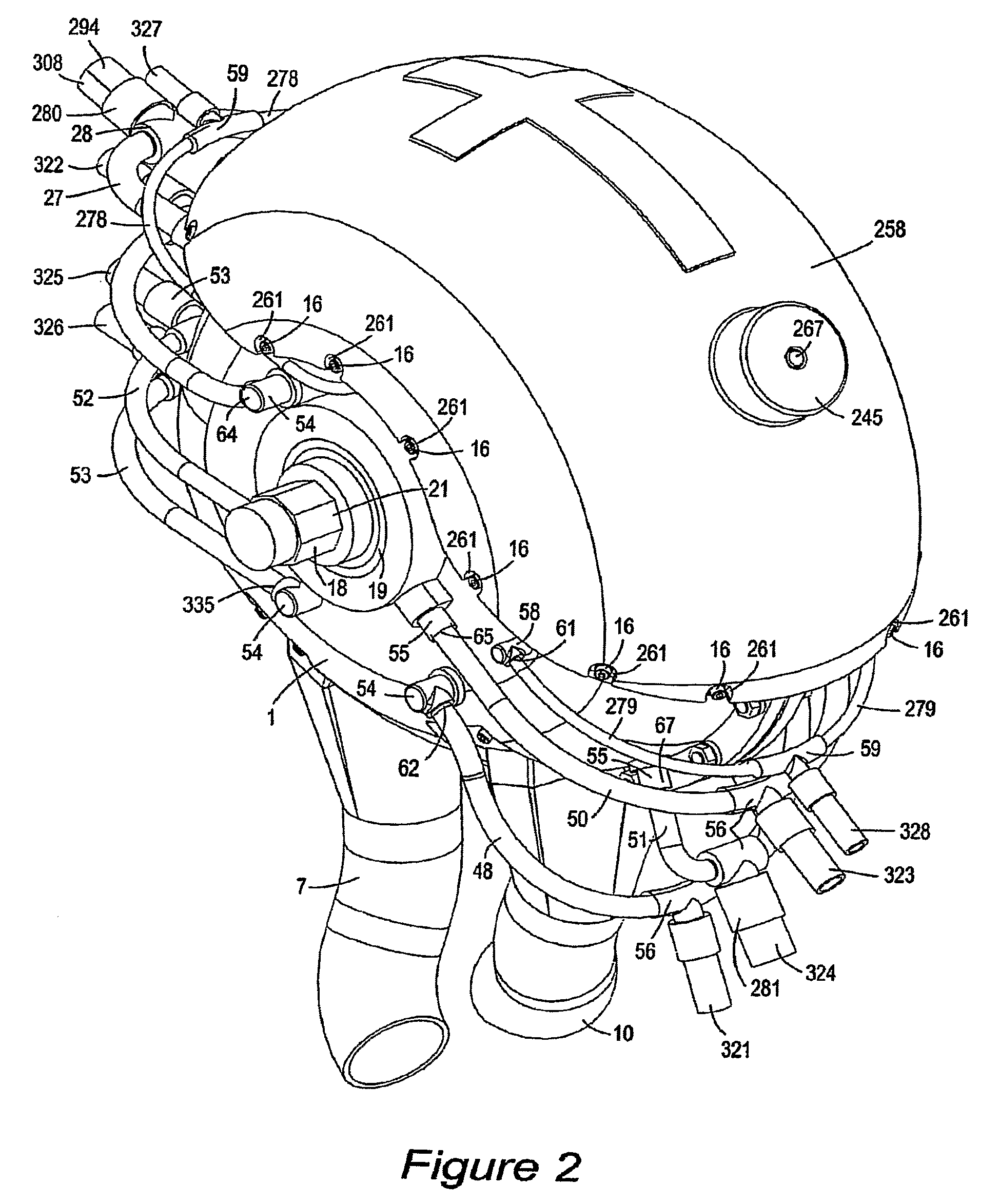Hydrogen G-cycle rotary internal combustion engine
a rotary internal combustion engine and rotary technology, applied in the direction of machines/engines, rotary/oscillating piston pump components, liquid fuel engines, etc., can solve the problems of increasing inflation and geopolitical tension, reducing the efficiency of combustion engines, etc., to achieve high tensile strength, low friction and wear, and high vane belt motion
- Summary
- Abstract
- Description
- Claims
- Application Information
AI Technical Summary
Benefits of technology
Problems solved by technology
Method used
Image
Examples
Embodiment Construction
Engine Operation Overview
[0162]The G-cycle engine 1 includes an outer housing 2 having an inner housing surface 37 in the form of a distorted oval within which a rotor assembly 183 rotates clockwise. See FIGS. 3 and 4. The housing 2 includes a sodium vapor chamber 229 separate from and not in communication with the compression, combustion and expansion zones 31, 32 and 33, respectively of the engine 1. Thus the inside surface 37 of housing 2 slopes arcuately inwardly toward a driveshaft 18 about which the rotor 183 rotates from an intake port 6 at about 0° crank angle through about 105° to a circumferential location adjacent the beginning of the sodium vapor chamber229. The inner surface 37 of the housing 2 adjacent to the beginning of the sodium vapor chamber 229 and the beginning of the expansion zone 33 arcuately moves outwardly away from the driveshaft 18 to obtain a maximum geometric distance from the center of driveshaft 18 at about 147° beyond the beginning of the expansion z...
PUM
 Login to View More
Login to View More Abstract
Description
Claims
Application Information
 Login to View More
Login to View More - R&D
- Intellectual Property
- Life Sciences
- Materials
- Tech Scout
- Unparalleled Data Quality
- Higher Quality Content
- 60% Fewer Hallucinations
Browse by: Latest US Patents, China's latest patents, Technical Efficacy Thesaurus, Application Domain, Technology Topic, Popular Technical Reports.
© 2025 PatSnap. All rights reserved.Legal|Privacy policy|Modern Slavery Act Transparency Statement|Sitemap|About US| Contact US: help@patsnap.com



